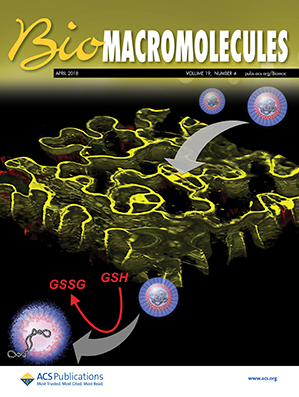从微藻生物量中设计淀粉样蛋白聚集体。
IF 5.4
2区 化学
Q1 BIOCHEMISTRY & MOLECULAR BIOLOGY
引用次数: 0
摘要
我们的社会对石化衍生塑料的依赖对环境产生了重大影响,大约80%的此类塑料最终成为持久性废物。为此,我们研究了从微藻,特别是螺旋藻和小球藻中提取和纯化蛋白质,并将其自组装成淀粉样聚集体,作为开发可持续生物塑料材料的基石。自组装后,螺旋藻蛋白形成了典型的纤维状结构(尽管很短,像蠕虫一样),而小球藻蛋白主要聚集成非纤维状的球形/环状结构。尽管形态不同,但两种微藻蛋白聚集体在很宽的pH范围内都表现出令人印象深刻的稳定性,在pH 12分解之前可以持续到pH 11。总之,这项工作强调了生物质来源、蛋白质纯度和组成对不同蛋白质聚集过程的重要性。鉴于微藻的高蛋白含量和不断扩大的工业生产,螺旋藻和小球藻是开发可持续生物塑料的未开发资源。本文章由计算机程序翻译,如有差异,请以英文原文为准。
Designing Amyloid-Like Protein Aggregates from Microalgal Biomass
Our societal dependence on petrochemical-derived plastics has significant environmental ramifications, with about 80% of such plastics ending up as persistent waste. To this end, we investigate the extraction and purification of proteins from microalgae, specifically spirulina and chlorella, and their self-assembly into amyloid-like aggregates as building blocks toward the development of sustainable bioplastic materials. After self-assembly, spirulina proteins formed beta-sheet-rich structures with a typical (albeit short and worm-like) fibrillar morphology, while chlorella proteins predominantly aggregated into nonfibrillar, spherical/annular structures. Despite their morphological differences, both microalgal protein aggregates exhibited impressive stability across a wide pH range, persisting up to pH 11 before disaggregating at pH 12. In short, this work highlights the importance of biomass source, protein purity, and composition on the aggregation process of differing proteins. Given the high protein content and expanding industrial production of microalgae, spirulina and chlorella present an untapped resource for the development of sustainable bioplastics.
- Download: Download high-res image (95KB)
- Download: Download full-size image
求助全文
通过发布文献求助,成功后即可免费获取论文全文。
去求助
来源期刊

Biomacromolecules
化学-高分子科学
CiteScore
10.60
自引率
4.80%
发文量
417
审稿时长
1.6 months
期刊介绍:
Biomacromolecules is a leading forum for the dissemination of cutting-edge research at the interface of polymer science and biology. Submissions to Biomacromolecules should contain strong elements of innovation in terms of macromolecular design, synthesis and characterization, or in the application of polymer materials to biology and medicine.
Topics covered by Biomacromolecules include, but are not exclusively limited to: sustainable polymers, polymers based on natural and renewable resources, degradable polymers, polymer conjugates, polymeric drugs, polymers in biocatalysis, biomacromolecular assembly, biomimetic polymers, polymer-biomineral hybrids, biomimetic-polymer processing, polymer recycling, bioactive polymer surfaces, original polymer design for biomedical applications such as immunotherapy, drug delivery, gene delivery, antimicrobial applications, diagnostic imaging and biosensing, polymers in tissue engineering and regenerative medicine, polymeric scaffolds and hydrogels for cell culture and delivery.
 求助内容:
求助内容: 应助结果提醒方式:
应助结果提醒方式:


